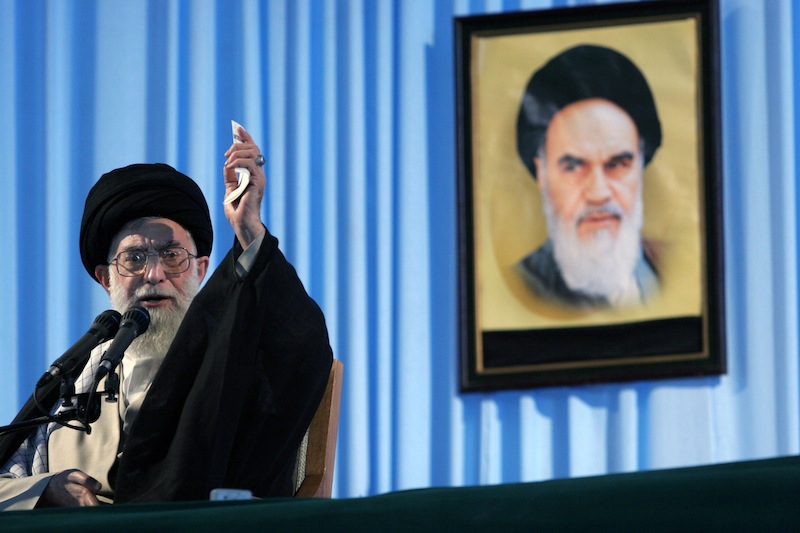VIENNA (AP) — It took months of arduous bargaining before Iran and six world powers could agree on a first-step nuclear deal. But the two sides may find the going even tougher Tuesday, when they start to confront hurdles standing in the path of a final accord.
In effect for six months, the deal is meant to lead to a final accord that minimizes any potential Iranian nuclear weapons threat in return for a full lifting of sanctions.
But as the sides begin haggling over the final pact in Vienna, Gary Samore, who helped the U.S. negotiate with Iran until last year, describes the interim deal as “simply a truce,” with the hard work still ahead.
Ayatollah Ali Khamenei, Iran’s supreme leader, is even more pessimistic.
Accusing the Americans of approaching the talks in bad faith, he urged Iranian envoys on Monday to do their best but said the negotiations “will lead nowhere.”
A look at some obstacles:
HOW MANY CENTRIFUGES?
The interim accord says a final deal would leave Iran with an “enrichment program with practical limits and transparency measures” to ensure its peaceful nature. That means haggling over the number of centrifuges, the machines that enrich uranium to high-tech applications that can range from reactor fuel to use in nuclear bombs.
Samore, the former White House arms control coordinator who is now with Harvard’s Belfer Center think tank, says the Iranians will insist on keeping all of the 20,000 centrifuges set up at their enrichment sites. Of those, 10,000 are running and Tehran will push to keep as many of those operating as possible. But the United States fears that having 20,000 centrifuges on site — even with most of them idle — would give Iran the capacity to produce enough weapons-grade enriched uranium within a few months.
Washington and its five negotiating partners — Russia, China, Britain, France and Germany — want only a few thousand of the machines standing. They calculate that would give them a more than a one-year window, if Iran turned on all its centrifuges and started working on weapons-grade uranium from the start to the time it had enough for one weapon.
Centrifuge types also will be in dispute. The Iranians want to upgrade with advanced machines that work up to four times faster than older centrifuges now doing most of the enriching.
Samore says bargaining over enrichment will be the most difficult issue and expects little tangible progress until the end of this year — if at all.
FORDO AND ARAK:
The U.S. and its allies see the underground enriching facility at Fordo as a particular problem because it is heavily fortified against aerial attacks.
Samore says the six powers want Fordo shut down. But because Tehran is opposed to tearing down any of its atomic infrastructure as a matter of national pride, a possible compromise would be to “repurpose” Fordo while keeping it a nuclear facility, perhaps as a storage area for equipment or material.
The reactor under construction at Arak is a concern because it is a heavy-water facility that would produce substantial amounts of plutonium that also can be used as the fissile core of a missile. Converting the reactor to a light-water installation or cutting back on its output would ease big-power concerns.
Samore agrees with Iranian officials that construction is too far advanced to re-engineer the reactor, saying it would make more sense to take a wrecking ball to it and finance the building of a new, light-water reactor. But because of Iran’s insistence that its nuclear facilities be kept intact, he suggests that the six may offer to reconfigure it anyway “to give the Iranians some face-saving.”
BACK TO SQUARE ONE?
The interim agreement says that as a member of the Nuclear Non-Proliferation Treaty, Iran will at some point be treated as any other non-nuclear weapons NPT member state, if it honors commitments it takes on under a final agreement.
But the big question is when? And what happens then?
The U.S. and its allies will likely seek to extend the agreement for up to 25 years for maximum assurance that Iran has forsworn any potential nuclear weapons ambitions. Samore says Iran wants the final agreement to end after five years, and when it does expire Tehran can start building its nuclear program like any other non-weapon NPT states.
That could include running tens of thousands of centrifuges, heavy-water reactors that produce substantial amounts of plutonium and other measures now worrying the international community. All are allowed under the NPT as long as the U.N. nuclear agency can find no reason to suspect that any activity is non-peaceful.
Samore agrees that could result in renewed worries but shares the view that it is impossible to single out Iran for restrictions that other NPT member states are not under once it is deemed to have dispelled concerns that it represents a threat.
The plan to push for decades of nuclear curbs rests on hopes of regime change in Iran— for what the United States considers would be a more democratic government.
“That will be so far in the distant future that it is very likely that there will a different leadership,” says Samore.
___
AP correspondent Nasser Karimi contributed from Tehran.






